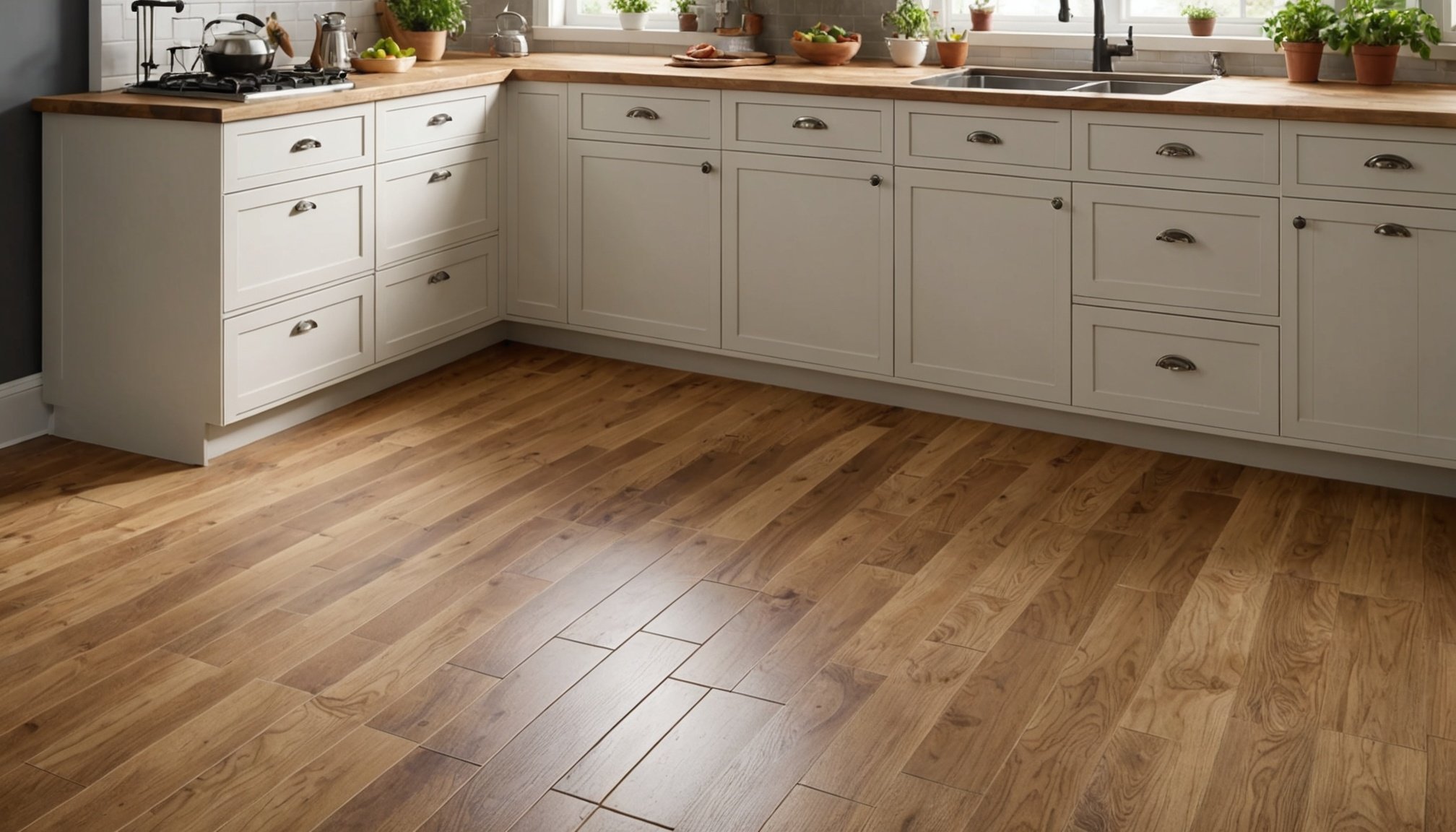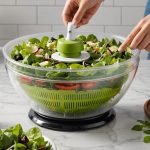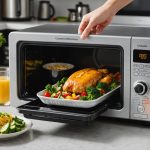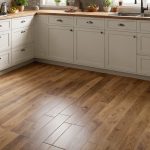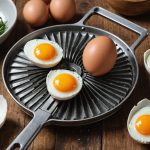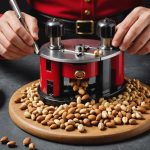Cooking in a compact kitchen can often lead to discomfort, especially when standing for long periods. The right anti-fatigue flooring not only enhances comfort but also transforms your culinary space into a more enjoyable environment. From durable mats to innovative surfaces, the options available cater to both style and functionality. Discover how the right flooring can reduce strain and make your cooking experience relaxing, all while maximizing your limited space. Embrace comfort and practicality with thoughtful flooring choices that make a difference.
Overview of Anti-Fatigue Flooring
Enhancing comfort and productivity in kitchen environments.
Also read : Essential Features of a Slimming Microwave: Your Guide to Healthier Meal Prep!
Definition and Purpose
Anti-fatigue flooring is designed to reduce discomfort and improve productivity for individuals who stand for extended periods. This type of flooring is particularly beneficial in kitchens, where cooking and standing tasks are frequent. By providing a cushioned surface, it alleviates pressure on joints and muscles, promoting better posture and reducing the risk of fatigue-related injuries.
Benefits for Cooking and Standing Tasks
The benefits of anti-fatigue flooring extend beyond comfort. It enhances overall well-being by minimizing strain, which can lead to increased focus and efficiency during cooking. In addition, this flooring type can contribute to a safer kitchen environment by reducing slip risks.
Also read : Essential Salad Spinner Design Elements for Preserving Freshness and Boosting Salad Enjoyment
Types of Materials
Several materials are commonly used in anti-fatigue flooring, each offering unique advantages:
- Rubber: Durable and easy to clean, ideal for high-traffic kitchens.
- Foam: Lightweight and affordable, providing excellent cushioning.
- Gel: Offers superior comfort, though typically at a higher price point.
Choosing the right type of flooring for kitchens depends on specific needs, such as durability, ease of maintenance, and budget considerations. Each material's properties cater to different preferences, ensuring there is a suitable option for every kitchen environment.
Best Anti-Fatigue Flooring Materials
Discover the ideal flooring for your kitchen's comfort and functionality.
Comparison of Rubber vs. Foam Flooring
Rubber flooring and foam flooring are two popular choices for anti-fatigue surfaces. Rubber flooring is renowned for its durability and ease of maintenance, making it a top choice for high-traffic kitchen areas. Its resilience ensures long-lasting performance, even under heavy foot traffic. On the other hand, foam flooring offers superior cushioning, providing a softer feel underfoot. It's lightweight and often more affordable, catering to those seeking comfort without a hefty price tag.
Pros and Cons of Vinyl and Cork Flooring
Vinyl flooring is a versatile option, known for its water resistance and ease of cleaning. It's available in various designs, making it adaptable to different kitchen aesthetics. However, it might lack the cushioning effect found in other materials. Cork flooring, conversely, is eco-friendly and offers natural shock absorption, enhancing comfort. Its downside includes potential susceptibility to moisture damage.
Overview of Laminate Flooring Options
Laminate flooring provides a budget-friendly alternative that mimics the look of wood or stone. While not inherently anti-fatigue, it can be paired with cushioned underlays to improve comfort. Its easy installation and variety of styles make it a practical choice for many kitchens.
Table of Material Properties:
| Material | Durability | Comfort | Cost | Maintenance |
|---|---|---|---|---|
| Rubber | High | Moderate | $$ | Easy |
| Foam | Moderate | High | $ | Moderate |
| Vinyl | Moderate | Low | $$ | Easy |
| Cork | Moderate | High | $$$ | Moderate |
| Laminate | Low | Moderate | $ | Easy |
Benefits of Anti-Fatigue Flooring in Small Kitchens
Optimizing comfort and design in compact spaces.
Importance of Comfort During Long Cooking Sessions
Comfort in cooking is essential, especially in small kitchens where space constraints can exacerbate fatigue. Anti-fatigue flooring offers ergonomic support, crucial for those who spend extended periods preparing meals. By reducing pressure on the feet and legs, this flooring promotes a more pleasant cooking experience, enhancing both productivity and enjoyment.
Space-Saving Characteristics of Anti-Fatigue Flooring
In a compact kitchen design, every inch counts. Anti-fatigue flooring is typically thin yet effective, making it an ideal choice for maximizing space without compromising on comfort. Its ability to fit seamlessly into tight areas allows for a more efficient kitchen layout. This space-saving feature ensures that even the smallest kitchens can benefit from ergonomic flooring solutions.
Impact on Health and Well-being
The health benefits of anti-fatigue flooring extend beyond immediate comfort. By encouraging better posture, it reduces the risk of long-term musculoskeletal issues. This flooring type can significantly improve overall well-being, making it a wise investment for any kitchen.
Key Benefits:
- Promotes ergonomic posture
- Enhances comfort in cooking
- Maximizes space in compact kitchens
Incorporating anti-fatigue flooring into your kitchen design is not just about comfort; it's about creating a healthier, more efficient cooking environment.
Cost Comparisons of Anti-Fatigue Flooring Options
Analyzing expenses for a wise flooring investment.
Price Range of Different Flooring Materials
When considering flooring costs, it's essential to evaluate both the initial expense and the long-term benefits. Rubber flooring typically ranges from $3 to $8 per square foot, offering durability that justifies its price. Foam flooring is more budget-friendly, costing approximately $1 to $3 per square foot, making it ideal for those seeking affordable solutions without sacrificing comfort.
Long-Term Cost Benefits vs. Initial Investment
Investing in anti-fatigue flooring can lead to significant long-term savings. Despite higher upfront costs, materials like rubber and gel can reduce fatigue-related injuries, potentially lowering healthcare expenses. The durability of these options means less frequent replacements, enhancing their value as a flooring investment over time.
Budget-Friendly Alternatives for Compact Kitchens
For compact kitchens, budget-friendly flooring alternatives such as foam and laminate paired with cushioned underlays offer cost-effective comfort. These options balance affordability and functionality, ensuring even small spaces benefit from ergonomic enhancements.
Cost Overview Table:
| Material | Cost per Sq. Ft. | Budget-Friendly | Long-Term Savings |
|---|---|---|---|
| Rubber | $3 – $8 | Moderate | High |
| Foam | $1 – $3 | High | Moderate |
| Gel | $4 – $10 | Low | High |
Considering these factors can help you make a well-informed flooring investment that suits both your budget and comfort needs.
Installation Tips for Anti-Fatigue Flooring
Ensuring a seamless and effective setup for lasting comfort.
Step-by-Step Guide for DIY Installation
For those eager to embark on DIY flooring projects, installing anti-fatigue flooring can be both rewarding and practical. Begin by measuring the kitchen area to ensure accurate material purchase. Prepare the surface by cleaning and leveling it. Lay out the flooring to visualize placement, then cut any necessary edges. Adhere the flooring using recommended adhesives, ensuring a firm bond. A weighted roller can help secure the installation.
When to Consider Professional Installation
While DIY flooring projects are feasible, certain scenarios warrant professional flooring installation. If the kitchen layout is complex, or if there's a need for intricate cuts and fittings, professional expertise can ensure precision. Additionally, if the flooring material is particularly expensive, hiring professionals can safeguard against costly mistakes.
Maintenance Tips for Longevity
Proper maintenance can extend the life of your anti-fatigue flooring. Regular cleaning with mild detergents prevents buildup of grime. Avoid harsh chemicals that may damage the surface. For rubber flooring, periodic resealing can maintain its durability.
- Maintenance Checklist:
- Regular cleaning
- Use mild detergents
- Avoid harsh chemicals
- Reseal rubber surfaces periodically
Adhering to these guidelines ensures your flooring remains a long-term investment in comfort and efficiency.
Recommended Anti-Fatigue Flooring Products
Explore top choices for enhancing kitchen comfort.
Top-Rated Anti-Fatigue Flooring Products for Kitchens
Selecting the best anti-fatigue flooring products can transform kitchen experiences. Among the top-rated options, the GelPro Elite stands out for its superior cushioning and stylish design, making it a favorite in many user reviews. Another popular choice is the NewLife by GelPro, praised for its affordability and solid construction, ideal for those seeking budget-friendly solutions.
User Reviews and Experiences
User feedback highlights the practicality of these flooring options. Many appreciate the GelPro Elite for its luxurious feel and durability, noting its ability to withstand high traffic without losing comfort. Conversely, NewLife by GelPro is often recommended for compact kitchens, where its slim profile fits seamlessly.
User Feedback Highlights:
- GelPro Elite: "Luxurious and durable, perfect for busy kitchens."
- NewLife by GelPro: "Affordable and practical for small spaces."
Visuals of Recommended Products in Compact Kitchen Settings
Visuals play a crucial role in understanding the impact of these flooring recommendations. Imagine the GelPro Elite adding elegance to a modern kitchen, while the NewLife by GelPro complements a cozy, compact space. These products not only enhance comfort but also elevate kitchen aesthetics, proving their worth as top flooring recommendations.

